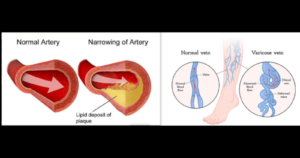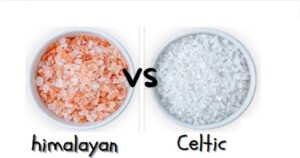Zucchini leaves and pumpkin leaves differ in appearance and texture. Zucchini leaves are typically broader and smoother, with a deep green color and a slightly fuzzy texture on the underside. They are often heart-shaped and have prominent veins. On the other hand, pumpkin leaves are larger, more jagged, and have a rough, almost prickly texture. They exhibit a lighter green hue with a distinctive five-lobed shape.
Pumpkin leaves tend to be more robust and durable, allowing them to withstand the sprawling growth habit of the pumpkin plant. Despite these disparities, both types of leaves are edible and are used in various cuisines around the world, contributing their unique flavors and textures to a range of dishes.

Can you eat zucchini and pumpkin leaves?
Pumpkin leaves are edible
from my experiences and years of cooking pumpkin leaves stir fry i can tell you it makes a delicious dish, many of times it is use to make a dish call MUBOORA.
As per Kansas State University agriculture experiment and the University of California-Davis, there’s no need to delay gratification until the pumpkin fully matures. The plant’s leaves are entirely edible and can be prepared in a manner similar to cooking spinach. Opt for young, tender leaves when using them in this way.
Zucchini leaves are edible
Yes, zucchini leaves are edible. They are commonly used in various cuisines around the world. The younger, more tender leaves are typically preferred for consumption. They can be cooked in a similar way to other leafy greens like spinach or collard greens. Keep in mind that like with any edible plant, it’s important to ensure they are clean and free from pesticides or contaminants before consuming them.
Zucchini Leaves shape, size,texture and color
| Characteristic | Zucchini Leaves |
|---|---|
| Shape | Typically heart-shaped |
| Size | Broader and smaller compared to pumpkin leaves |
| Color | Deep green |
| Texture | Smooth on top with a slightly fuzzy underside |
| Veins | Prominent and well-defined |
The zucchini, also known as courgetti or baby marrow (Cucurbita pepo), is a summer squash belonging to the vining herbaceous plant category. Its fruits are typically harvested when their seeds and outer rind are still tender and edible. While closely related to the marrow, the zucchini is distinct and referred to as marrow when it reaches maturity.
Zucchinis come in various shades of green, with the golden variety being a rich yellow or orange. When fully grown, they can reach lengths of nearly 1 meter (3 feet), but they are usually picked at around 15–25 cm (6–10 in).
From a botanical perspective, the zucchini’s fruit is classified as a pepo, which is a type of berry formed from the swollen ovary of the zucchini flower, possessing a hardened outer layer. However, in culinary applications, it is considered a vegetable. It is commonly cooked and served as a side dish or in savory recipes, though occasionally finds its way into sweeter preparations.
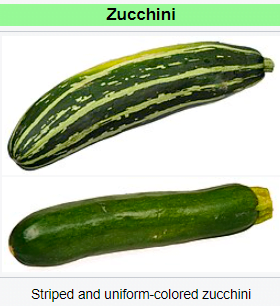
- Calories: 19 kcal, Sugars: 2.4 grams
- Protein: 1.5 grams
- Carbohydrates: 3.6 gram
- DietaryFiber: 1.2 grams
- Fat: 0.4 grams
- Vitamin C: 20.4 milligrams
- Vitamin A: 40 micrograms
- Folate (B9): 24 micrograms
- Potassium: 325 milligrams
- Magnesium: 22.5 milligrams
- Manganese: 0.2 milligrams
- Vitamin K: 7.8 micrograms
- Riboflavin (B2): 0.1 milligrams
- Thiamine (B1): 0.05 milligrams
- Vitamin B6: 0.1 milligrams
Key Characteristics Of zucchini leaves vs pumpkin
Zucchini leaves and pumpkin leaves have some similarities, as they both belong to the Cucurbitaceae family. However, there are also notable differences between them:
Zucchini Leaves:
- Generally lighter green in color.
- Smooth texture on both sides of the leaf.
- More uniform in shape, often heart-shaped.
- Slightly glossy appearance.
- Tend to be more tender and flexible.
Leaves: Zucchini plants have large, dark green leaves with a rough texture. The leaves are typically lobed and can be somewhat prickly to the touch due to tiny hairs on the surface.
Pumpkin Leaves:
- Darker green in color, sometimes with a bluish tint.
- Rough and textured surface, especially on the top side of the leaf.
- Highly variable in shape, often deeply lobed or palmate.
- Can have a matte or slightly waxy appearance.
- Thicker and more rigid compared to zucchini leaves.
- Flowers: Like zucchinis, pumpkins also have separate male and female flowers. The female flower, again, is typically larger and contains an embryonic fruit at its base. The male flower is smaller and grows on a long stem. The appearance of these flowers can vary between different species of pumpkins.
- Leaves: Pumpkin plants also have large, lobed leaves, but there can be variations in leaf shape and texture depending on the specific species or variety. Some pumpkin leaves may have a softer texture compared to zucchini leaves.
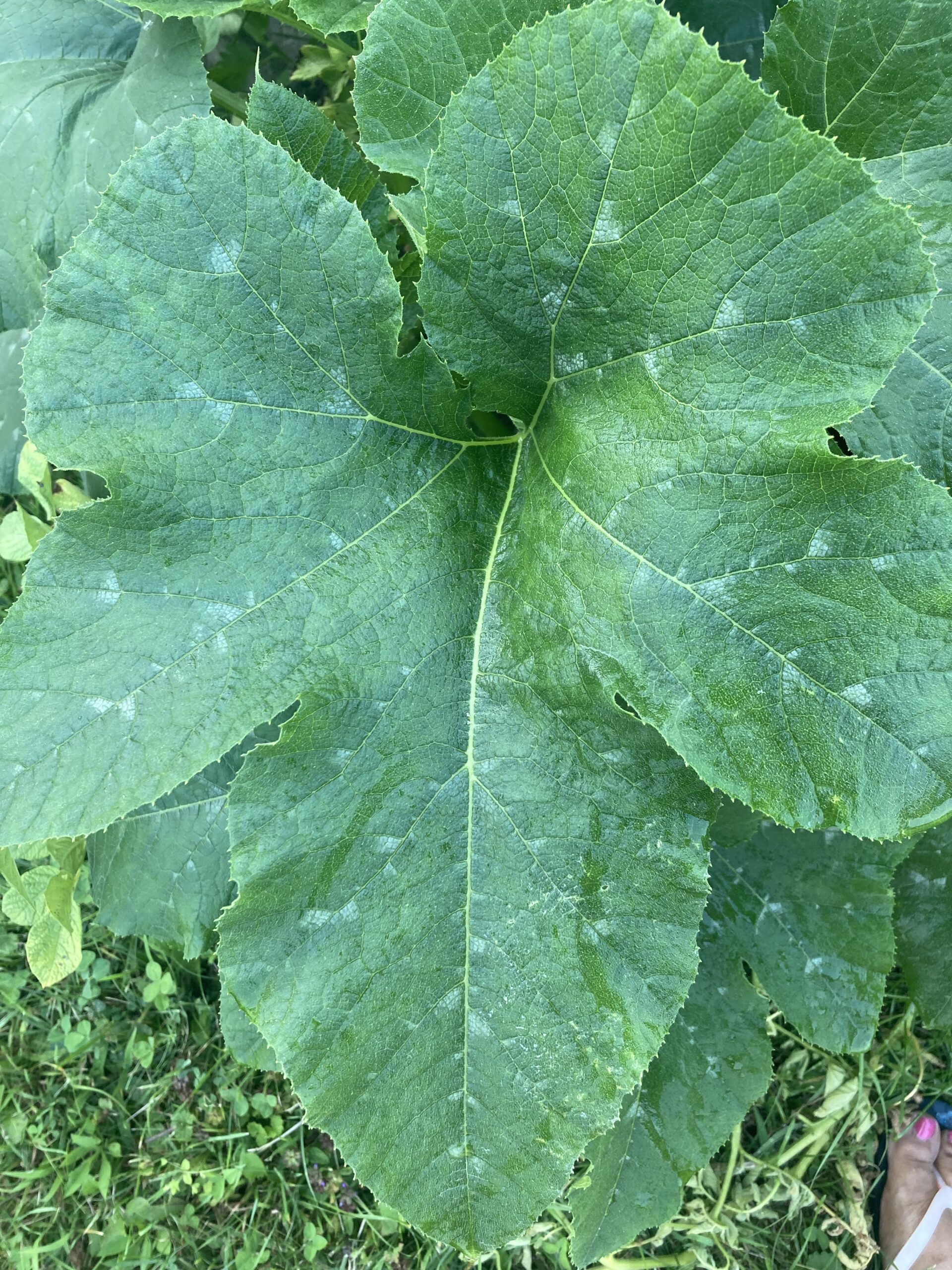
Additional Note:
Pumpkin leaves may have a more pronounced scent when crushed, sometimes described as earthy or musky.
These differences in leaf characteristics can be helpful in identifying zucchini and pumpkin plants in a garden or agricultural setting.
Both zucchini and pumpkin plants have similar flower structures with distinct male and female flowers. The leaves of both plants are large, lobed, and green, though there can be variations in texture and shape. It’s worth noting that there can be some variability within each species based on the specific variety or cultivar. Additionally, both zucchini and pumpkin flowers are edible and can be used in culinary applications.
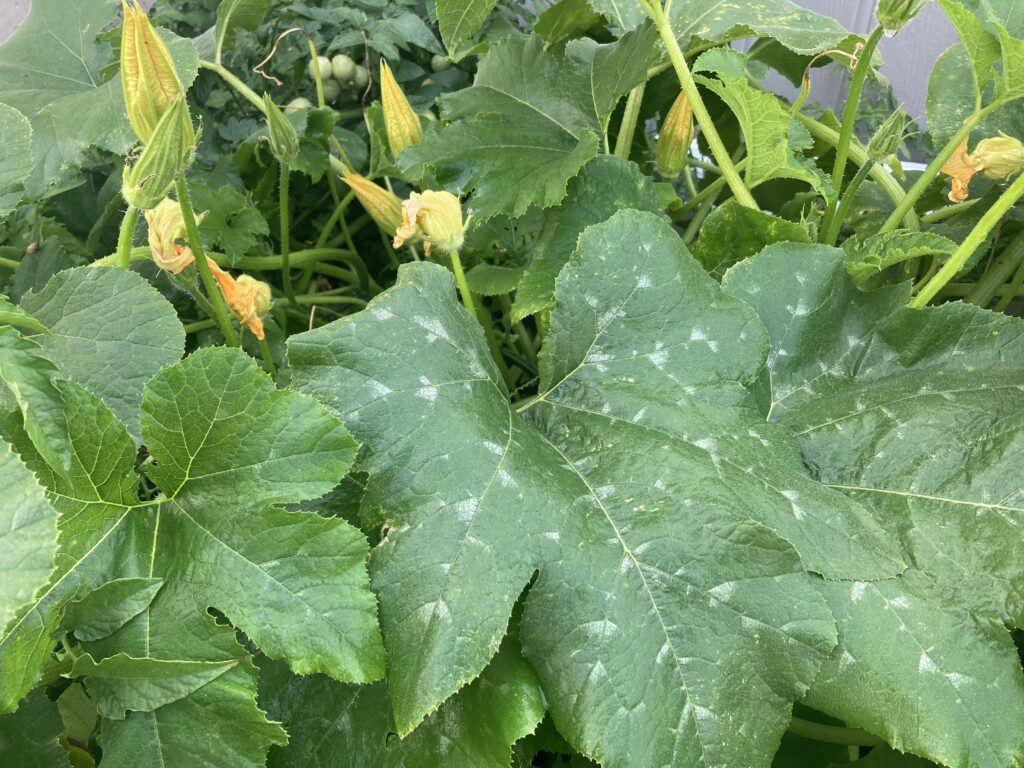
| Zucchini Leaves: | Pumpkin Leaves | |
| Color | Deep green | Lighter shade of green |
| Texture | Slightly fuzzy on the underside | Rough, almost prickly |
| Leaf Venation | have prominent veins, which are more noticeable especially on the undersides. | also have visible veins but may have a more intricate network due to their larger size. |
| Leaf Arrangement | Zucchini leaves are usually arranged alternately along the stem. | Are also arranged alternately but can be spaced further apart due to their larger size. |
Differences in Taste and Texture, Zucchini vs. Pumpkin Leaves
When comparing zucchini leaves and pumpkin leaves in terms of taste and texture, there are some noticeable differences:
Taste:
- Zucchini Leaves:
- Zucchini leaves have a mild, slightly earthy flavor. They tend to be more delicate in taste compared to pumpkin leaves.
- The younger leaves are often preferred as they have a milder flavor and are less bitter.
- Pumpkin Leaves:
- Pumpkin leaves have a stronger, slightly bitter taste with a hint of nuttiness. The bitterness is more pronounced in older leaves.
- When cooked, the bitterness mellows out, and the leaves develop a richer, more robust flavor.
Texture:
- Zucchini Leaves:
- Zucchini leaves are typically softer and more tender, especially when they are young. They have a slightly velvety texture due to fine hairs on the surface.
- When cooked, they become quite tender, making them suitable for dishes where a delicate texture is desired.
- Pumpkin Leaves:
- Pumpkin leaves are coarser and thicker compared to zucchini leaves. They also have a fuzzy texture due to the presence of fine hairs.
- The texture becomes softer when cooked, but they remain slightly more fibrous than zucchini leaves. The coarseness makes them ideal for stews and dishes where a bit of texture is preferred.
Nutritional content of zucchini leaves and pumpkin leaves
Both zucchini leaves and pumpkin leaves are valuable sources of essential nutrients like vitamins A and K, as well as minerals like iron and calcium. Including a variety of leafy greens in your diet can contribute to overall health and well-being. Always consult with a healthcare professional or nutritionist for personalized dietary advice.
| Zucchini Leaves | Pumpkin Leaves |
|---|---|
| Calories: 19 | 17 |
| Protein: 2.7g | 2.2g |
| 3.9g | 3.1g |
| Fiber: 3.2g | 2.2g |
| Fat: 0.4g | 0.6g |
| Vitamin A: 6180 IU | 11250 IU |
| Vitamin C: 57mg | 55mg |
| Vitamin K: 186.6mcg | 55mcg |
| Calcium: 80mg | 45mg |
| Iron: 1.2mg | 3.8mg |
| Magnesium: 81mg | 55mg |
| Potassium: 449mg | 440mg |
Zucchini leaves
- Vitamin A: Zucchini leaves are a good source of vitamin A, which is essential for maintaining healthy vision, skin, and immune function.
- Vitamin C: This vitamin is important for immune function, skin health, and acts as an antioxidant that helps protect cells from damage.
2. Dietary Fiber:
- Zucchini leaves are rich in dietary fiber, which aids in digestion, helps regulate blood sugar levels, and supports a healthy cardiovascular system.
3. Antioxidants:
- Zucchini leaves, like the vegetable itself, contain antioxidants that help protect the body’s cells from damage caused by free radicals.
Pumpkin Leaves:
- Vitamins
- Vitamin A: Pumpkin leaves are particularly rich in vitamin A, which supports healthy vision, immune function, and skin health.
- Vitamin K: This vitamin plays a crucial role in blood clotting and bone metabolism.
2. Essential Minerals:
- Iron: Pumpkin leaves are a good source of iron, an essential mineral that is important for the production of hemoglobin in red blood cells.
- Calcium: This mineral is vital for strong bones and teeth, as well as muscle function and nerve signaling.
3. Antioxidants:
Similar to zucchini leaves, pumpkin leaves contain antioxidants that help protect cells from oxidative stress.
Both zucchini leaves and pumpkin leaves can be used in cooking, especially in various cuisines around the world. They are often used in dishes like soups, stews, salads, and stir-fries. They can be a nutritious addition to your diet, providing a range of vitamins and minerals.
It’s important to note that while these leaves offer nutritional benefits, they should be properly washed and cooked before consumption to remove any potential contaminants or harmful microorganisms.
Health benefits of zucchini leaves and pumpkin leaves
Zucchini leaves and pumpkin leaves offer a range of health benefits due to their rich nutritional content:
| Zucchini Leaves: | Pumpkin Leaves |
| Rich in Vitamins: Zucchini leaves are a good source of vitamins A and C. These vitamins are essential for maintaining healthy vision, skin, and immune function. | Rich in Vitamins: Pumpkin leaves are rich in vitamins A and K, supporting vision, immune function, blood clotting, and bone health.. |
| Dietary Fiber:Zucchini leaves are high in dietary fiber. This promotes healthy digestion, helps regulate blood sugar levels, and supports a healthy cardiovascular system. | |
| Zucchini leaves: contain antioxidants that help protect the body’s cells from damage caused by free radicals, contributing to overall cellular health. | Antioxidants: They contain antioxidants that help protect cells from oxidative stress, which can lead to cellular damage and aging. |
| Low in Calories: Zucchni leaves are low in calories, making them a nutritious addition to a balanced diet without contributing excess calories | Low in Calories: pumpkin leaves are low in calories but pack a punch in terms of nutritional content, making them a valuable addition to a balanced diet. |
| Mineral Content: While not as rich in minerals as some other leafy greens, they do provide small amounts of essential minerals like potassium, manganese, and magnesium. | Mineral Content: Iron-Rich: These leaves are a good source of iron, an essential mineral for the production of hemoglobin in red blood cells. This helps prevent anemia and supports overall energy levels. Calcium Source: Pumpkin leaves provide calcium, a vital mineral for strong bones and teeth. It also supports muscle function and nerve signaling. |
| Some studies suggest that certain compounds in pumpkin leaves may have anti-inflammatory properties, which can benefit overall health |
Advantages of Using Zucchini Leaves Compared to Pumpkin Leaves
- Texture and Flavor:
- Zucchini Leaves: Zucchini leaves are generally tender and have a mild flavor. They can be used in salads, stir-fries, or as a wrapper for other ingredients.
- Pumpkin Leaves: Pumpkin leaves can be tougher and have a slightly more pronounced flavor. They are often used in various cuisines, especially in African and Asian dishes.
- Nutrient Content:
- Both zucchini and pumpkin leaves are good sources of essential nutrients, including vitamins, minerals, and fiber. However, the exact nutrient content can vary based on factors like soil quality and growing conditions.
- Culinary Uses:
- Zucchini Leaves: Zucchini leaves are often used in Mediterranean and European cuisines. They can be stuffed, used in salads, or added to soups and stews.
- Pumpkin Leaves: Pumpkin leaves are commonly used in African and Asian cuisines. They are often cooked and consumed as a vegetable side dish or added to soups and stews.
- Cultural and Regional Preferences:
- The choice between zucchini and pumpkin leaves may also depend on cultural and regional preferences. Different cuisines have developed specific ways of using these leaves based on local culinary traditions.
- Availability:
- The availability of zucchini and pumpkin leaves can vary depending on the region, climate, and growing season. In some areas, one type of leaf may be more readily available than the other.
- Cooking Methods:
- Zucchini leaves are versatile and can be used in various cooking methods, including raw in salads or cooked in different dishes.
- Pumpkin leaves may require longer cooking times to become tender, and they are often boiled or sautéed before being added to dishes.
When deciding between zucchini and pumpkin leaves, consider the specific dish you want to prepare and your personal taste preferences. Both types of leaves can be nutritious and flavorful when incorporated into a well-balanced diet.
Growth Patterns of Zucchini plant and Pumpkin
- Both zucchini and pumpkin plants belong to the same botanical genus (Cucurbita) and share similar growth patterns with other members of the squash family.
- Proper spacing is crucial for both types of plants. Zucchinis need enough room for air circulation, while pumpkins require ample space for their sprawling vines.
- Both plants are warm-season vegetables and thrive in well-draining soil with plenty of sunlight.
- Due to their different growth habits, zucchinis are often well-suited for container gardening or smaller garden spaces, while pumpkins are best grown in larger garden areas or open fields.
Zucchini Plants:
- Bushy and Compact Growth: Zucchini plants (Cucurbita pepo) are known for their bushier growth habit. They tend to grow more vertically, creating a dense and compact appearance.
- Leaf Arrangement: The leaves of a zucchini plant are typically large, dark green, and broadly lobed. They often have a rough texture and are arranged alternately along the stem. These leaves tend to hug the ground, which helps in conserving moisture and providing some shade to the lower parts of the plant.
- Fruit Production: Zucchinis produce their fruits close to the main stem. The flowers and young fruit are usually visible and easily accessible due to the compact growth habit.

Pumpkin Plants:
- Long, Sprawling Vines: Pumpkin plants (Cucurbita pepo or Cucurbita maxima) have a very different growth pattern compared to zucchinis. They are characterized by their long, sprawling vines that can extend several feet from the main plant.
- Leaf Structure: Pumpkin leaves are large, often broader than those of zucchinis, and have deeply lobed edges. They are also typically lighter in color, a mottled green with some silvery patches.
- Leaf Support: These larger leaves are better equipped to support the weight of the growing fruit. They are spread out along the vine, providing a kind of natural canopy that helps protect the developing pumpkins from direct sunlight and helps maintain soil moisture.
- Fruit Production: Unlike zucchinis, pumpkins produce their fruit at the end of long runners that extend from the main vine. This allows the fruit to sit on the ground or on supports like straw or wooden boards, ensuring it has enough space to grow to its full size.
Understanding these growth patterns is essential for successful cultivation and harvest of zucchinis and pumpkins. Providing the right conditions and care tailored to each plant’s needs will lead to a bountiful harvest.
Culinary uses of Zucchini Leave vs Pumpkin leave
Zucchini Leaves:
- Flavor Profile: Zucchini leaves have a mild, slightly earthy flavor. They are tender and have a delicate, almost nutty taste. This complements the subtle sweetness of zucchini fruit.
- Texture: The leaves are tender and can be eaten raw in salads or cooked. When cooked, they become slightly softer and add a pleasant texture to dishes.
- Cooking Methods: Zucchini leaves can be used in a variety of ways. They can be chopped and added to salads for a fresh, green component. They can also be sautéed, steamed, or blanched and used as a wrapper for fillings. For example, they can be filled with a mixture of rice, herbs, and spices and then steamed.
- Cultural Use: In some Mediterranean cuisines, zucchini leaves are used to make dolmas, which are stuffed vegetable leaves. These can be filled with a mixture of rice, herbs, and sometimes meat. You can find a good easy recipe for stuff zucchini leaves if you hit the link.

Pumpkin Leaves:
- Flavor Profile: Pumpkin leaves have a slightly bitter taste that is balanced by a subtle earthiness. They add a unique depth of flavor to dishes.
- Texture: They have a robust texture with a bit of a bite even when cooked. This makes them a great addition to dishes that benefit from a bit of structure.
- Cooking Methods: Pumpkin leaves are commonly used in soups, stews, and stir-fries. They can be cooked until tender or left slightly crisp depending on the desired texture.
- Cultural Use: In many African and Asian cuisines, pumpkin leaves are a staple ingredient. They are used in dishes like egusi soup in Nigeria, and in Filipino cuisine, they are often sautéed with garlic and other ingredients.
zucchini and pumpkin leaves enhance the flavor profile of dishes made with their respective fruits. Zucchini leaves bring a mild, nutty taste that complements the subtle sweetness of the zucchini fruit. Pumpkin leaves, on the other hand, contribute a unique and slightly bitter flavor that pairs well with the earthy taste of pumpkin. Additionally, the texture of both leaves adds an interesting element to dishes, making them valuable ingredients in a wide range of culinary traditions.
Resources
https://en.wikipedia.org/wiki/Zucchini
https://enewsletters.k-state.edu/

